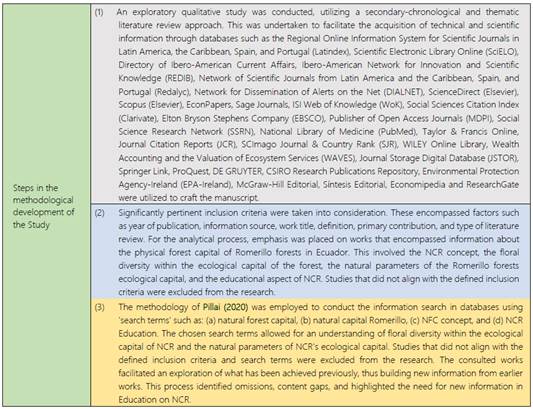1. Introduction
Education on 'Natural Forest Capital' (NFC) entails promoting and comprehending the sustainable management of forest resources. Forests play a crucial role in supporting life on Earth by providing ecosystem benefits such as biodiversity conservation, carbon sequestration, and climate regulation (Arce, 2020). The aim of Education on NFC is to increase awareness and appreciation of forest resources while advocating for their sustainable utilization. This involves educating individuals about the importance of forests, sustainable practices for their utilization, and effective forest management approaches. This study focuses on enhancing education on NFC to contribute to the sustainable development of global, regional, urban, and local communities, with specific emphasis on the preservation of endemic natural forests and environmental protection. Typically, NFC education covers various topics including renewable and recoverable natural resource education, non-renewable natural resource education, market natural resource education, and non-market natural resource education (Daly, 1990).
Deforestation, resulting from human activities such as intensive agriculture, mining, infrastructure construction, and indiscriminate tree cutting, continues to pose a significant challenge to forestry capital worldwide. Its repercussions include severe environmental problems such as loss of biodiversity, soil erosion, and desertification. Inadequate forest management is another issue that can lead to forest depletion, irreversible loss, soil degradation, reduced productivity, and compromised water quality. Insufficient efforts in conservation and restoration further contribute to the loss of biodiversity and the decline of ecosystem services provided by natural forests (Capriolo et al., 2020).
Furthermore, natural forests face various additional threats at the global, regional, and local levels due to social and political conflicts related to land ownership, community rights, and the exploitation of forest resources. These conflicts can lead to forest degradation and the loss of invaluable ecosystem services. It is crucial to acknowledge that these are just a few examples of the issues impacting forest capital in different regions, and each situation requires tailored solutions. Consequently, research on the "education on natural forest capital" assumes great significance in promoting sustainable forest resource management, fostering environmental stewardship, and safeguarding the well-being of local communities (Hinson et al., 2022; Small et al., 2023).
It is worth noting that these challenges represent only a selection of the issues that can affect forest capital in various regions worldwide. Each location faces its own unique set of challenges, underscoring the importance of researching the "education on forest natural capital" to promote sustainable forest resource management internationally. Such studies contribute to raising awareness about sustainable utilization and environmental preservation, as well as the well-being of local communities (Small et al., 2023).
Romerillo forests serve as an example for developing education on the NFC because they are found in certain regions of Latin America, especially countries in the Andean area of South America such as Peru, Ecuador, and Colombia (Dalling et al., 2010). Additionally, according to various authors who have studied this type of natural capital, Romerillo forests are at risk of extinction, and the more developed old-growth ones (which are becoming scarce) are the most endangered (Yaguana et al., 2012; Bonilla, 2015b). In this regard, it is possible to develop education regarding the derived services, such as outdoor landscaping of natural capital, a wide range of ecosystem services including outdoor recreational opportunities, beauty, appreciation and contemplation of Romerillo forests, soil protection, climate regulation, biodiversity conservation, and timber production (ex situ), as well as non-timber forest products (Cordero et al., 2008; Neill, 2020).
Educating the public, both formally and informally, about the importance of understanding and preserving the Natural Capital of Romerillo (NCR) forests is highly valuable, not only from an environmental standpoint but also economically, especially considering the endangered status of this forest type (as previously indicated). Education on forest conservation and sustainable management can have various benefits, such as climate prevention and mitigation, protection of biodiversity and water resources, provision of ex situ information services (like ecological art and environmental literature), as well as intangible benefits for local communities and societies. This approach promotes sustainable economic development in harmony with nature and the environment (Corona & Kaltmeier, 2012; Geier, 2020).
Gaining an understanding of the issues related to NCR forests and exploring sustainable management approaches is crucial to maximize social and economic benefits at the local and regional levels. Studies on NCR can focus on social forestry development alternatives to raise public awareness about the significance of forests, biodiversity management and conservation, carbon sequestration in forest ecosystems, and improving community well-being through sustainable forest utilization (Barbier, 2019).
Moreover, the concept of Education on NCR is relatively new and understudied within the field of natural sciences. Challenges such as the lack of information, follow-up, and monitoring of scientific publications regarding "social-forestry and environmental education of the Romerillo natural asset" have hindered the dissemination of accumulated knowledge for the sustainable use and long-term conservation of Romerillo resources. Insufficient understanding of scientific literature on natural capital education, particularly concerning forest ecosystems, further contributes to undervaluation and lack of knowledge regarding the current state of NCR. This is especially true in terms of economically intangible uses of natural forests and education encompassing natural historical, theological, social, political, technological, and cultural aspects for the conservation of Romerillo forests in Ecuador and Peru (Bonilla, 2015b).
The issue surrounding NCR in Ecuador may share similarities with the concept of "natural forest capital" in Peru and other South American countries. This raises complex questions, one of which is: How has the education on NFC developed in the context of the concept's meaning and specifically for the case of natural Romerillo forests in Ecuador? The need for education on Romerillo forests involves reviewing existing literature on their conservation and potential uses, particularly intangible ones, of the goods and forest services provided by Romerillo forests, both intrinsically (the nature itself) and for society. The overall objective of this research is to review existing scientific literature on the Romerillo forest asset and propose a sustainable education approach for NCR. The specific objectives include: (a) Reviewing the concept of forest capital in a general context; (b) Proposing a concept of education for natural capital of Romerillo; (c) Suggesting alternative ways to develop the concept of Education on NCR, primarily in the Ecuadorian context, but potentially adapting them to other circumstances in the region, including Peru.
2. Methodology
In this study, exploratory research methodology was employed, based on the approach suggested by Fernández et al. (2007) and Dash (2019). This method seeks to clarify the delineation of ambiguous issues through a comprehensive literature review and/or expert opinions. Dash (2019) contends that exploratory literature review studies entail exploring available information in libraries, online sources, books, journals, newspapers, and other outlets. The works of Baumeister & Leary (1997), Davis et al. (2014), and Pillai (2020), both in theory and practice, assert that literature review is a versatile social research method applicable across diverse scientific disciplines. Grant & Booth (2009) also illustrate that literature review analysis techniques can take various forms, such as chronological, conceptual, thematic, or mixed.
Within this methodological framework, an exploratory research method with secondary information was used, in combination with a literature review and a mixed literature analysis technique (thematic, conceptual and chronological) to study the NCR. The focus was on exploring, analyzing documents, and examining content within national and international contexts.
It is important to highlight that Hart (1998) and Mortensen (2012) underscore the significance of conducting a literature review on the concept of Romerillo natural forest capital, emphasizing the utilization of knowledge from prior research to offer insights for future directions. Additionally, to pinpoint relevant literature, the review adhered to and modified the recommendations outlined by Webster & Watson (2002) and Leite et al. (2019) in a three-step process, as depicted in Figure 1.
3. Results and discussion
3.1. The concept of natural forest capital, in general context
The concept of natural forest capital (NFC) has been defined in various ways. Cordero et al. (2008) describe it as encompassing boreal, temperate, and tropical forests worldwide. Miller (2007) views it as environmental resources and services. Gómez-Baggethun & De Groot (2008) emphasize its social, religious, and spiritual values. The Programa de las Naciones Unidas para el Medio Ambiente- PNUMA (2010) refers to the economy of ecosystems and biological diversity. Wu et al. (2010) highlight the critical role of NFC in ecology, aesthetics, and ecological development.
In terms of environmental assets and based on accounting for sustainability, for Farrell & Stout (2020), the natural capital refers to the global stock of natural assets. Cohen et al. (2019) note that it includes natural assets with limited substitution by other forms of capital; Dickie & Neupauer (2019) consider it a natural asset for present and future societies. Özdemiroğlu (2019) defines it as stocks (quality and quantity) and profit streams; Pan & Vira (2019) view it as an asset that encompasses biodiversity and ecosystem services. For Padilla (2020), the natural asset sustains the socioeconomic activity of a human population; Neil et al. (2020) indicates that the natural asset favors the bioeconomy with rational and ecologically conscious environmental objectives; Houdet et al. (2020) point it out as capital to create sustainable value.
With a slightly different accounting perspective, Hein et al. (2021) conceptualize natural capital as an accounting asset that should be included in national accounts. Wentland et al. (2020) view it as a non-renewable natural capital, specifically "land", used to estimate its economic value in the USA. Sullivan (2020) considers the NFC as a biodiversity and biological diversity (genders and species) asset; in the Biological Diversity Convention, held in 2020, it was emphasized the sustainable use of ecosystem goods and services. S&P Global Ratings (2021) focuses on the sustainable use of natural resources and nature preservation. Bagstad et al. (2021) define it as assets that encompass agriculture, water, con servation, land use planning, climate, and corporate decisions. In addition, Lorena & Panhoca (2021) note the difficulty in categorically understanding the NFC term or measuring its value. Amir (2021) sees it as a "stock" capable of generating benefits and value for people. Kumagai et al. (2022) identify ecosystem services containing specific areas and species relevant to national policies.
In terms of proposals, Hein et al. (2021) suggest the restoration, rehabilitation, and accounting of natural capital to foster ecosystem development. Smith et al. (2021), from the perspective of "natural capital financing," define a specific subset of sustainable monetary funds aimed at conserving, enhancing, or maintaining natural capital. Meanwhile, Radchenko et al. (2021) propose environmental public policy strategies to promote the security and preservation of natural capital.
According to Jiménez-Herrero (2001), the term "knowledge for education" is closely associated with the concept of forest natural capital. It encompasses the definitions and information regarding renewable and non-renewable natural capital, which are offered and demanded as market goods and services, with their value and utilization needing to be measured and monitored. This measurement serves to promote sustainable growth within a green economy.
Despite the importance of the topic, education related to forest natural capital (NFC) has received limited attention, as indicated by various research studies. Considering the significance of this con cept, both formal and informal education on NFC can be defined as the transmission of intangible "natural assets" and environmental services. These services act as providers of informational, knowledge-based, scientific, and educational cultural services, promoting the sustainable and conservation-oriented intangible utilization of forest natural capital.
In summary, education on Conservation of Natural Resources should encompass both formal and informal methods of educating individuals about the value of ecosystem assets. These assets, which include the stock and quality of natural forest resources, play a vital role in sustaining the socioeconomic activities of human populations. NCR education should emphasize the diverse biological species, such as plants and animals, found in boreal, temperate, and tropical forests, as well as factors like geology, soil, air, water, and other environmental services and information. The goal is to foster the creation of sustainable value and promote the growth of an "intangible creative ecological economy" (ICCE). This can be achieved by recognizing and incorporating these assets into national accounts, highlighting their importance in terms of quantity and quality.
3.2. The concept of natural capital of Romerillo (NCR)
Gálvez et al. (2003) describe the NCR as the only conifer native in Ecuador, but also thriving in Peru and some other tropical forests of the Andes in South America. The NCR belongs to the Podocarpaceae family and consists of three native genera, two found in Andean forests and one in the Amazon. Rojas (2005) and Lozano & Yaguana (2009) explain that the NCR comprises vascular gymnosperm plants (Pinophyta) with notable dasometric characteristics in terms of tree architecture, basal area, diameters, and dominant heights.
According to Bonilla (2014), sustainable exploitation of the NCR necessitates promoting education and economic investment in pure or mixed cultivated plantations ex situ (off-site in agroforestry systems or models), considering biological and economic cutting cycles in homogeneous planted forests. Bonilla (2015b) argues that Romerillo forests, in their natural state, offer valuable "intangible environmental services" for economic production and human well-being, including outdoor recreation, tourism, environmental literature, and the promotion of ecological arts as potential alternatives for developing a creative ecological economy. Similarly, Guerry et al. (2015) emphasize that the NCR functions as a life support system, which aligns with the perspective of Bonilla & Alarcón-Novoa (2015a), as they highlight the high-value ecosystem goods and services that can be derived from these ecosystems.
Similarly, to the broader concept of education within NFC, the specific field of education related to Romerillo Capital lacks comprehensive definitions from researchers. Considering its significance in the Ecuadorian context, it can be defined as the process of teaching sustainable utilization and conservation practices to individuals and society through formal and informal educational programs. The focus is on providing knowledge and information about the natural assets associated with Romerillo forests, with an emphasis on raising awareness about the intangible "environmental goods and services." This includes understanding the gender, species, quantity, and quality of Romerillo forests. The ultimate objective is to promote the intangible economic utilization that arises from a creative ecological economy, while simultaneously ensuring the conservation of Romerillo forests within and beyond their natural ecosystem.
3.3. The concept of education on forest natural capital, in the Ecuadorian context
Environmental education about Romerillo forests in Ecuador serves as a significant source of intangible natural physical capital from extraordinary ecological importance in conserving environmental goods and services. Education on NCR facilitates the understanding of the rich floristic composition of this natural capital. In Ecuador some studies have documented up to 107 plant species within an 11,000 m2 area. Notably, species from the “podocarp” family, which hold great ecological significance, are prominent. With a primary objective of educating the population, Education on NCR aims to convey the various aspects that constitute the concept of natural capital in Romerillo forests in Ecuador (Lozano & Yaguana, 2009; Blandariz et al., 2023).
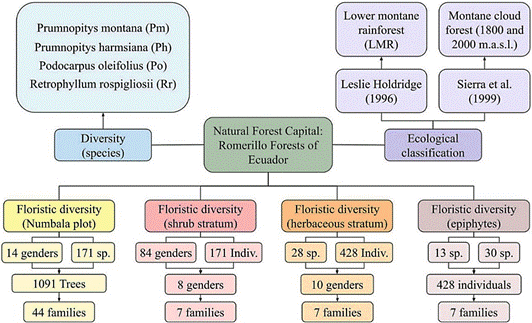
Figure 2 Education on the natural forest capital of Romerillo in Ecuador. Source: Adapted from Lozano & Yaguana (2009).
Figure 2 illustrates key elements crucial to educating individuals of all ages, including students, children, youth, and adults, about the NCR. It presents information on species diversity, ecological classification, floristic diversity at various levels such as plot, shrub layer, herbaceous plants, and epiphytes. This visual aid enhances understanding of the functioning of Romerillo forests (Lozano & Yaguana, 2009).
In addition, Figure 3, pertinent details regarding the concept of educating the natural capital of the Romerillo forest are depicted. It showcases ecological parameters specific to Romerillo species, bridging the gap between scientific knowledge and the notion of "education on the natural capital of Romerillo" (or podocarp forests).
Figure 3 presents informative data aimed at educating the population about the concept of natural capital education of Romerillo. It highlights ecological parameters that contribute to the formation of the forest ecological capital of Romerillo for individuals ≥ 5 cm. in Ecuador. These parameters include density (5 - 29 individuals/ha), basal area (0.31 - 16.45 m2/ha), dominance (24.51% - 35.17%), and importance value index (11% - 37.83%). These parameters are instrumental in understanding the plant species diversity and structural composition of these forest ecosystems, further promoting Education on NCR. Notably, studies have recorded a total of 1091 individuals, with 56 of them belonging to Romerillo mollón C.N. Page (Retrophyllum rospigliosii Pilg.), Romerillo azuceno (Podocarpus oleifolius D. Don ex Lamb), and Romerillo fino (Prumnopitys harmsiana -Pilg. Laub) species within an area of 1.1 ha. These figures demonstrate the dominance and ecological significance of these valuable ecosystems, particularly for formal and informal education on NFC, as they encompass a cloud forest ecosystem with exceptional and emblematic characteristics for learning in Ecuador (Gálvez et al., 2003; Bonilla, 2015b).
Figure 4 illustrates the natural capital formation of tropical forests as stores of biomass and providers of ecological functions for both nature and society. The sale of forest resources (given the conversion of biomass into wood), can produce economic benefits, but finite ones, to the extent that there is inadequate forest management and depletion of heterogeneous forests through unsustainable logging practices, which lead to a slow recovery and a potential extinction of the forest resource. Therefore, it is crucial to view the tangible forest asset as an intangible forest physical asset (AFFI) through forest natural capital education. This approach emphasizes the non-physical use of the capital, focusing on knowledge and information about ecological functions, utilizing the “Romerillos” information service. The purpose would be to transform intangible assets (knowledge or existing information about “Romerillos”) into a tangible economic product, enabling the generation of "infinite" economic benefits, it is knowledge-based economy through ecological literature, intangible ecological arts, environmental and economic culture, that do not compromise the stocks of the forest resource for the development of a creative ecological economy in space and time. It is important to ensure that these endeavors support the development of a creative ecological economy while preserving the stock of forest resources in space and time.
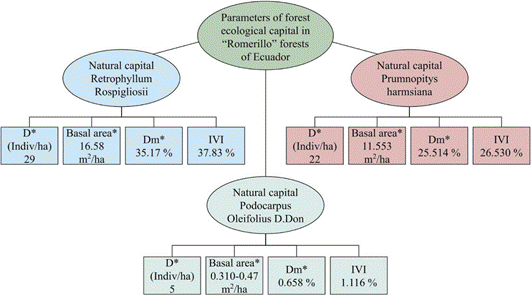
Figure 3 The concept of education linked to the ecological parameters of the NCR in Ecuador. Abbreviations: IVI: Importance Value Index; D: Density; Dm: Dominance; G: Basal Area. Source: Adapted from Lozano & Yaguana (2009).
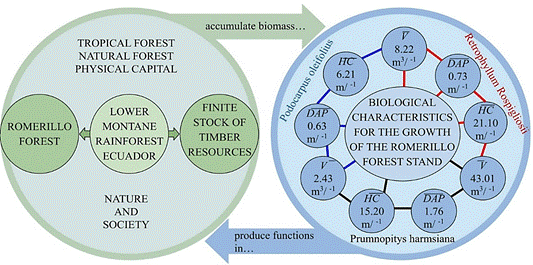
Figure 4 NFC cycle in Andean and humid lower montane forests of the Ecuadorian Amazon. Source: Adapted from Bonilla (2014).
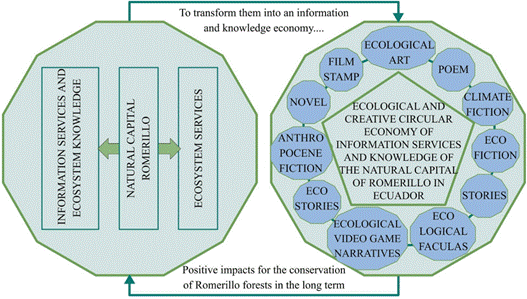
Figure 5 Education related to the natural capital of Romerillo for the development of a creative ecological economy, in Ecuador. Source: Adapted from Jiménez-Herrero (2001); Geier (2020); Bonilla (2015b).
Figure 5 shows that the education on NFC regarding ecosystem services and specialized information and knowledge services can foster the development of a positive creative ecological economy for mankind and society. This enables favorable benefits of intangible ecological services such as ecological literary development (digital ecological books, poetry, poems, novels, fables, and enchanting ecological tales with a touch of mysticism), ecological essays, theater, climate fiction, intangible ecological art (digital paintings), ecofiction, ecological storytelling, videos, eco-stories, natural Anthropocene fiction, short films or movies based on ecological narratives, educational video games for conservation teaching and learning, ecological documentaries, and the development of philately or stamps for the dissemination, sustainable use and recognition of NCR from the perspective of environmental innovation for green growth (Cordero et al., 2008; Geier, 2020; Alola & Akadiri, 2023).
In summary, as an alternative for the development of Education on NCR, a definition is proposed that involves utilizing the physical capital and environmental services of the forest in an intangible manner. This approach relies on information and knowledge services to foster sustainable use and a culture of environmental conservation, ultimately promoting a "sustainable creative intangible economy of the Romerillos" This is also related to what Alola & Akadiri (2023) states, indicating that environmental innovation, material productivity, and population promote green growth to generate economically sustainable benefits for local communities and society at large.
4. Conclusions
In general, the concept of NFC education has received limited attention and research, but it can be conceptualized in association with an education for an “Intangible Creative Ecological Economy” (ICEE), which enables the development of formal and informal education related to NFC. This education is focused on the utilization of natural assets and sustainable intangible, as well as environmental services derived from information, knowledge, science, and educational cultural services.
This study proposes addressing the educational aspect of NCR as the transmission of knowledge to individuals and society regarding the use of information and knowledge related to intangible environmental services. These are conveyed through formal and informal educational programs. In terms of knowledge utilization, emphasis is placed on teaching, learning, and utilizing intangible environmental assets or goods and services for the development of a creative, intangible ecological economy, as well as for the conservation of trees and Romerillo forests in the present and future.
The development opportunities presented by education on NCR are closely linked to the use of an ICEE, which is based on the development of information and knowledge products. This development encompasses ecological literature (such as digital ecological books, poetry, tales, essays, and theater), climate fiction, intangible ecological art (digital paintings), ecofiction, ecological fables, narratives, ecological videos, eco-stories, natural anthropocene fiction, novels, short films, ecological video games for teaching and learning in conservation, documentaries, and the development of ecological philately for dissemination, sustainable use, and recognition of Romerillo's natural forest capital.
This article represents the first exhaustive literature review that focuses on the concepts of NFC and NCR, as well as "Education" within both concepts (ICEE). The documentation and analysis have led to the following approach: First, the introduction of a new concept of intangible creative ecological economic education, through a broader definition that explains its connection with education related to Romerillo. Existing research suggests that the knowledge and scientific information about Romerillos can contribute to the promotion of an ecological economy based on intangible creative knowledge. Second, the key aspect of the ICEE concept revolves around the development of an ecological economy of intangible ecological literary knowledge and intangible ecological art to foster a positive environmental and economic culture among individuals and societies in highly forested natural capitals. This necessitates further research on the construction and implementation of ecological literature and intangible ecological art knowledge (Bonilla, 2015b). Third, the study advocates for additional work and research on the education of “intangible natural forest capital” to foster a practical intangible creative ecological economy in boreal, temperate, and tropical forests. The aim is to mitigate deforestation and preserve natural forests worldwide.
The study advocates for the development of new works and additional research on the education of "intangible natural forest capital" to promote the implementation of university educational programs and those that do not require degrees based on a deeper understanding of the construction and implementation of biocommerce strategies derived from intangible biodiversity services, such as ecological literature and intangible ecological art. This aims to provide better employment opportunities for students regarding the sustainable use of NCR. In this way, a practical ecological economy for the Andean Romerillo forests could be created, aiming to enhance the conservation conditions of these natural forest resources and other socio-economic aspects of the connected societies without promoting their depletion in space and time. Ultimately, the goal of intangibly valuing the NCR is to encourage educational programs with a focus on social conservation sciences, mitigate deforestation, and preserve the natural forests of the Andean Romerillo for present and future generations.














